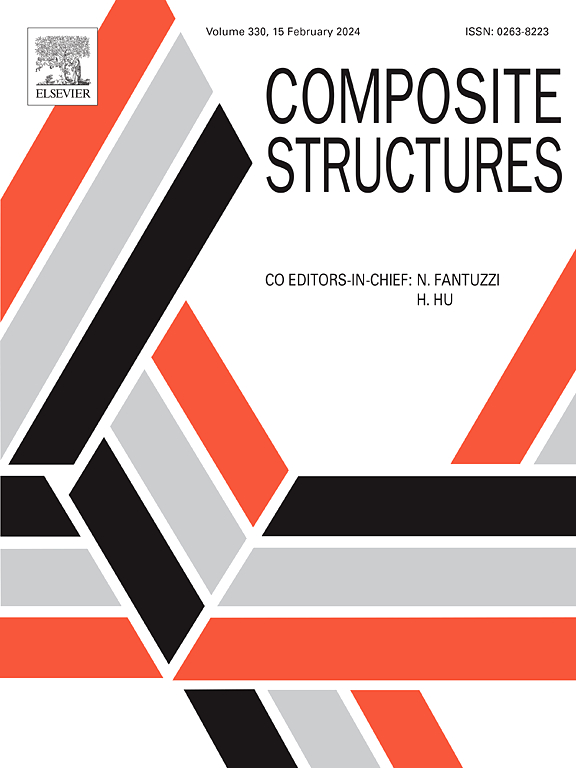Non-dimensional linear analysis of one-dimensional wave propagation in tensegrity structures
IF 6.3
2区 材料科学
Q1 MATERIALS SCIENCE, COMPOSITES
引用次数: 0
Abstract
This study presents a methodology for analyzing wave propagation in tensegrity lattices within a non-dimensional framework. Two strategies are employed to predict pass bands and bandgaps. The first examines wave dispersion through a single representative unit cell, using dispersion curves to identify bandgaps and pass bands. The second models the structure as a finite system, using modal analysis to compute the steady-state response to harmonic loads and plot the frequency response function. Two unit cells are analyzed: a two-dimensional D-bar unit and a three-dimensional tensegrity prism. The study investigates axial and in-plane bending wave propagation in a D-bar chain and axial wave propagation in a prism chain. After non-dimensionalizing the equations of motion, key parameters such as ratios of stiffness per unit length, mass per unit length, and prestress are identified. Its is shown that varying these parameters shifts the bandgap locations and widths. Prestress has minimal effect in the D-bar case, while a slight shift in the first bandgap is observed in the prism. The predictions from unit cell and finite structure analyses show good agreement.
张弦结构中一维波传播的非线性分析
本研究提出了一种在非维度框架内分析张力格栅中波传播的方法。研究采用了两种策略来预测通带和带隙。第一种方法是研究波在单个代表性单元格中的频散,利用频散曲线确定带隙和通带。第二种方法是将结构作为有限系统建模,利用模态分析计算对谐波负载的稳态响应,并绘制频率响应函数图。研究分析了两个单元:二维 D 型杆单元和三维张弦棱柱体。研究调查了轴向波和平面内弯曲波在 D 形杆链中的传播情况,以及轴向波在棱柱链中的传播情况。在对运动方程进行非尺寸化之后,确定了一些关键参数,如单位长度刚度比、单位长度质量比和预应力。结果表明,这些参数的变化会改变带隙的位置和宽度。预应力对 D 型棒的影响微乎其微,而在棱柱中观察到第一带隙有轻微移动。单细胞和有限结构分析的预测结果显示出良好的一致性。
本文章由计算机程序翻译,如有差异,请以英文原文为准。
求助全文
约1分钟内获得全文
求助全文
来源期刊

Composite Structures
工程技术-材料科学:复合
CiteScore
12.00
自引率
12.70%
发文量
1246
审稿时长
78 days
期刊介绍:
The past few decades have seen outstanding advances in the use of composite materials in structural applications. There can be little doubt that, within engineering circles, composites have revolutionised traditional design concepts and made possible an unparalleled range of new and exciting possibilities as viable materials for construction. Composite Structures, an International Journal, disseminates knowledge between users, manufacturers, designers and researchers involved in structures or structural components manufactured using composite materials.
The journal publishes papers which contribute to knowledge in the use of composite materials in engineering structures. Papers deal with design, research and development studies, experimental investigations, theoretical analysis and fabrication techniques relevant to the application of composites in load-bearing components for assemblies, ranging from individual components such as plates and shells to complete composite structures.
 求助内容:
求助内容: 应助结果提醒方式:
应助结果提醒方式:


